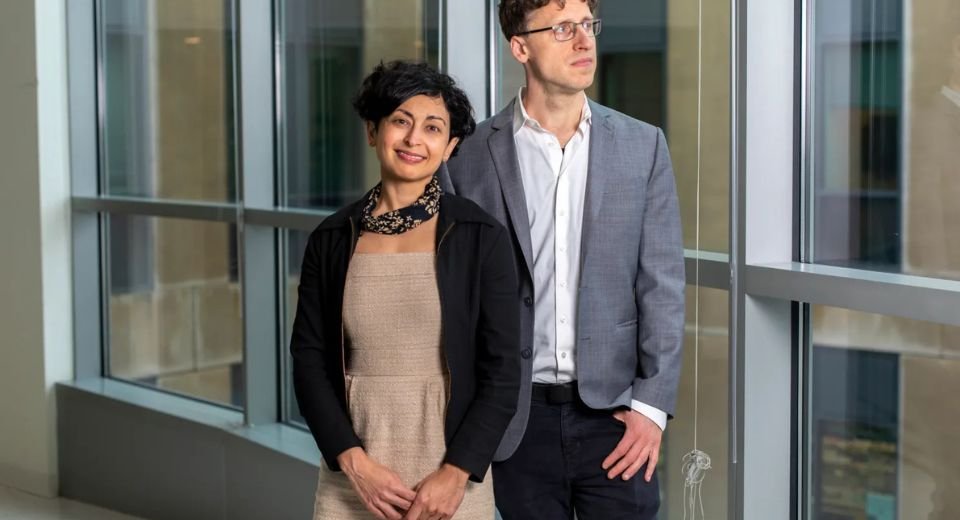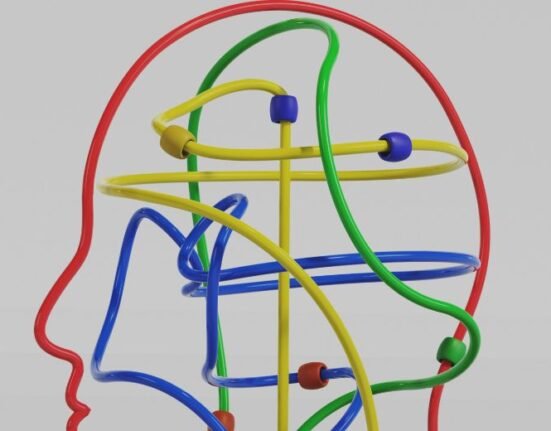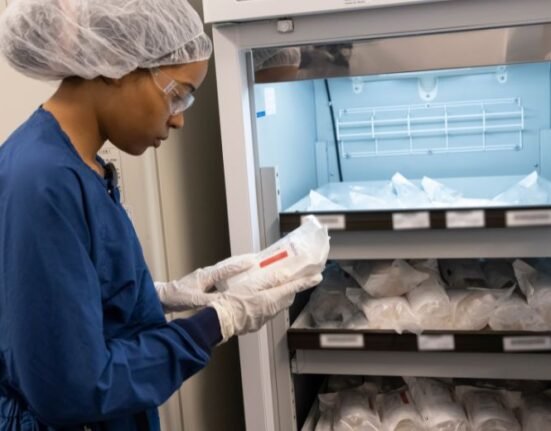HQ Team
April 10, 2025: Sonia Vallabh, a graduate of Harvard Law School and her husband Eric Minikel, who holds a planning degree from MIT, re-engineered their careers to do research into prion disease when she was diagnosed with the disorder.
Now their research may lead to a treatment if not a cure in the not-too-distant future, according to a statement from Harvard.
Their research showed that altering a single base in the gene that produces the killer proteins can reduce by half the amount of that protein in the brains of laboratory mice, a step that extended their lifespans by 52%.
Prion disease is a handful of rare, invariably fatal disorders caused by misfolded proteins in the brain.
It includes several conditions that lead to brain damage and dementia, including Creutzfeldt-Jakob disease, Gerstmann-Sträussler-Scheinker disease, and fatal familial insomnia.
Abnormal protein folds
About 15% of the cases are due to an inherited mutation in the prion protein gene, while 85% are “sporadic,” occurring when these proteins spontaneously fold into abnormal, toxic shapes.
Harvard Medical School Assistant Professor of Neurology Sonia Vallabh tested positive for an inherited form of prion disease called fatal familial insomnia.
In late 2010, Vallabh’s mother died of a mysterious, degenerative condition that subsequent tests would confirm as fatal familial insomnia.
After that Vallabh herself tested positive for the disease-causing mutation.
Retrain careers
That prompted Vallabh, who had graduated from Harvard Law School, and her husband, Eric Minikel, who holds a planning degree from MIT, to retrain for careers centred on understanding and developing a treatment for prion disease.
Today, the pair run their own lab at the Broad Institute of MIT and Harvard, employing 14 researchers.
Their work was published early this year in the journal Nature Medicine.
Authors of the work, at the Broad Institute of MIT and Harvard, have agreed that the results indicate the pathway that they embarked upon nine years ago toward effective treatment in humans appears promising.
They, however, cautioned that several potentially lengthy steps remain before human trials of the technique can be undertaken.
‘Become experts’
“I think it’s a milestone for sure,” said David Liu, senior author of the paper, in whose lab the base editing technology was developed. “One has to be careful to recognize that the path to an actual clinical trial has many such milestones that have to be traversed.”
In a relatively short time, Liu said, they have become experts on the therapeutically relevant aspects of the condition.
“It’s an incredible privilege to be able to work with them,” said Liu, the Thomas Dudley Cabot Professor of the Natural Sciences in Harvard’s Faculty of Arts and Sciences and a core institute member at the Broad.
“Their personal connection to the disease provides extraordinary motivation for everybody to try to make as much progress as we can — carefully, but as efficiently as possible.”
The encouraging results build on discoveries in Liu’s lab, which pioneered the single-base editing technique used in the experiments.
T-cell leukaemia
That technique has been used in 13 clinical trials, Liu said and has benefited patients suffering from hypercholesterolemia, sickle cell disease, T-cell leukaemia, and beta-thalassemia.
“David took us seriously long before anyone had much reason to, so we’ve had a collaboration with him for a good while,” said Minikel, who is also an assistant professor of neurology at Harvard Medical School.
“It’s been a perfect collaboration in the sense that Sonia and I have always felt like we care a lot about this disease, but we’re not technology development people. We’ll say, ‘Here’s the models and assays and the tools needed to develop a drug for this disease,’ but we’re probably not the ones who are going to make the drug.”
Human trials of any therapy that might emerge from the work remain several years away, Liu said.







